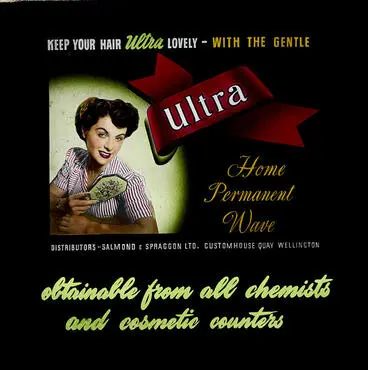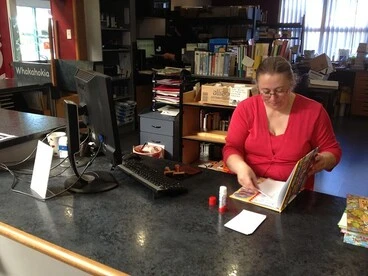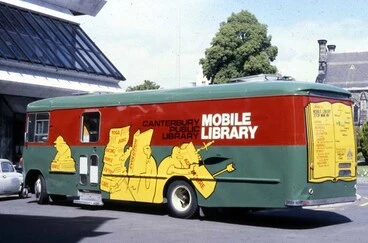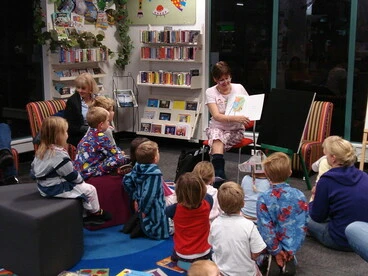Jobs in the Community (Part 1)
A DigitalNZ Story by National Library Services to Schools
Ambulance drivers, electricians, and farmers play an important part in our community. This story covers essential jobs in our community and the role they play to fulfill our needs.
COMMUNITY WORKERS WHO HELP PEOPLE
St John Ambulance was established in New Zealand in 1885.
Hawke's Bay Knowledge Bank
BACKGROUND
You will find many community workers in your neighbourhood, cities, and towns. These are people like farmers, bus drivers, and bakers whose work helps us fulfill our daily needs. This story is about some of the community workers in New Zealand and how their mahi (work) helps us every day.
This story contains the following :
- Ambulance drivers
- Bakers
- Bus drivers
- Carpenters
- Doctors
- Electricians
- Farmers
- Hairdressers
- Librarians
- Glossary
AMBULANCE OFFICERS
Ambulance officers are also called paramedics. They are specially trained to look after people who are ill or hurt. They use an ambulance, a four-wheel-drive vehicle, or a motorcycle to get to people in an emergency.
One of their most important jobs is to take care of people who are sick or injured and transport them to the hospital as quickly as possible. They also work with police and firefighters in emergencies like major accidents or fires.
MORE ABOUT AMBULANCE OFFICERS
. St John Ambulance — is the name of the ambulance services in New Zealand. Visit their website to learn more about how they help our community.
. Westpac Air Ambulance and Auckland Rescue Helicopter Trust — also helps fly people in urgent need of hospital care.
QUICK FACTS
· The Order of St John dates back to around 1070 when a place of care was set up by monks in Jerusalem for people making a pilgrimage to the holy city.
. St John’s helped during WWII by volunteering overseas with the New Zealand Military forces. At home in New Zealand, they rolled bandages and dressings and taught first aid at medical centers.
St John Ambulance Documentary
Hawke's Bay Knowledge Bank
Dodge Ambulance
Manatū Taonga, the Ministry for Culture and Heritage
Life Flight NZ air ambulance : digital image
Wairarapa Archive
Boly Bolliger holding bread sticks : digital image
Wairarapa Archive
BAKERS
Bakers work in a bakery or bakehouse where they make bread, cakes, pies, pastries, slices, and biscuits. They must know how to use equipment for baking, how to measure and mix ingredients, and how to follow a recipe.
MORE ABOUT BAKERS
. Baking Industry Association of NZ (BIANZ) — has more information about what bakers do and how to become a baker in New Zealand.
QUICK FACTS
· White bread was preferred to brown bread because people thought that brown bread was poor quality bread. It was only in the 1940s that brown bread or wholemeal bread was promoted as being healthier.
· In the 1960’s bakeries operated only on weekdays from Monday to Friday. This created a massive demand for bread on a Friday to last the weekend.
Fresh Bake, Bread
Puke Ariki
Taranaki Bakeries, Truck
Puke Ariki
Rachel Scott
Manatū Taonga, the Ministry for Culture and Heritage
Raelene Nicol, bus driver
South Canterbury Museum
BUS DRIVERS
Bus drivers take people from one place to another. Bus drivers drive school buses, public buses within a town or city, intercity buses between cities, and tour buses.
Bus drivers must know how to drive safely and follow all the traffic rules.
MORE ABOUT BUS DRIVERS
. careers.govt.nz. — has more about the job, and what skills and knowledge are required to become a bus driver.
QUICK FACTS
· Carol Slater was 21 when she became the first female bus driver in Wellington in 1974.
· According to Stats New Zealand, bus drivers are the oldest and most loyal workers of any key industry in New Zealand.
Bus driver
Manatū Taonga, the Ministry for Culture and Heritage
Tour bus
eqnz.chch.2010
Carpenter building a state house
Manatū Taonga, the Ministry for Culture and Heritage
CARPENTERS
Carpenters are skilled craftsmen specially trained to use different tools, machines, and materials. They make, erect, install and repair buildings and fixtures made from wood and other materials. The construction and furniture industries are examples of where carpenters work.
MORE ABOUT CARPENTERS
. Wintec.ac.nz — has more about what it takes to be a carpenter in New Zealand.
QUICK FACTS
· Plumbers, drainlayers, carpenters, and painters are also called tradesmen or tradies.
· Early carpenters in New Zealand imported their tools from Sheffield and Manchester in Britain. Tools were considered an investment and often a father would pass on his tools to his son(s) if they followed him in his chosen trade.
House under construction, Sunnymead Road, Glen Innes, 2017
Auckland Libraries
Carpenter's tools
Museum of New Zealand Te Papa Tongarewa
Carpenters Workshop K Hut
Antarctica New Zealand
New doctors at Timaru hospital
South Canterbury Museum
DOCTORS
There are many kinds of doctors. Some of them focus on specific parts of the body like the eyes or brain. Pediatricians only look after children, neurologists study the brain, dentists are doctors who specialise in teeth and oral health while surgeons perform surgery on people. Doctors work in clinics, medical centers, or hospitals.
MORE ABOUT DOCTORS
. KidsHealth — has more information about what happens when you visit a doctor and what tools are used by a doctor to do a check-up.
QUICK FACTS
· The Otago School of Medicine, the first medical school in New Zealand opened in 1875.
· The first women doctors to graduate from a medical school in New Zealand were Emily Siedeberg in 1896 and Margaret Cruickshank in 1897.
Doctor Lewis Arundell and Dr Paula Hyde
South Canterbury Museum
Margaret Cruickshank
Manatū Taonga, the Ministry for Culture and Heritage
EMILY SIEDEBERG
Our Wāhine
Electrician
Manatū Taonga, the Ministry for Culture and Heritage
ELECTRICIANS
Electricians work with electricity. They install and maintain electric power systems in homes, buildings, businesses, and factories. They also inspect and repair electronic equipment and systems to make sure they are working properly and safely.
Special training is required to a become qualified and licensed electrician in New Zealand.
MORE ABOUT ELECTRICIANS
. Skills — has videos on what it takes to be an electrician and how to become one in New Zealand.
QUICK FACTS
· Few homes in New Zealand had electricity until the 1920s.
· Electricians are also called 'sparkies' .
Here We Go Again
UC QuakeStudies
Electrician
Antarctica New Zealand
Telephone technicians, Ōtāhuhu, 1963
Auckland Libraries
Dairy farmer
Manatū Taonga, the Ministry for Culture and Heritage
FARMERS
Farmers work on animal and agricultural farms. They grow plants like wheat or raise livestock like cows and sheep to supply us with food. Dairy farms, sheep farms, chicken farms, crop farms, and orchards are some examples of the different types of farms.
MORE ABOUT FARMERS
. DairyNZ — has lots of information on dairy farmers and the farming industry in New Zealand.
QUICK FACTS
· Established in 2004, Tāhuri Whenua (National Māori Vegetable Growers Collective) is involved with Māori horticulture, research and development to improve traditional Māori crops.
· The Young Farmer of the Year competition has a series of tasks to test farming problem-solving, business and social skills.
Picking apples
Manatū Taonga, the Ministry for Culture and Heritage
Deer farming
Manatū Taonga, the Ministry for Culture and Heritage
Sheep farming
Manatū Taonga, the Ministry for Culture and Heritage
[Hairdresser].
Auckland War Memorial Museum Tāmaki Paenga Hira
HAIRDRESSERS
A hairdresser or barber is an important part of the community. They are specially trained to cut and style hair, and trim beards and moustaches. They listen carefully to understand the style of haircut a customer needs. Hairdressers also are experts on haircare.
MORE ABOUT HAIRDRESSERS
. careers.govt.nz — has information and a video to describe the work of a hairdresser, and how to train to become one.
QUICK FACTS
· Untill the 1920s most women cut their hair at home, as commercial hairdressers (barbers) were for men only.
· As more women began to work outside the home, hairstyles became shorter, easy to care for, and cut above the shoulder.
Philip Howe's haircut following Covid-19 lockdown, Timaru
South Canterbury Museum
Barbers' equipment
Manatū Taonga, the Ministry for Culture and Heritage
Librarians
Manatū Taonga, the Ministry for Culture and Heritage
LIBRARIANS
Librarians work in schools, universities, public libraries, law offices, hospitals and other workplaces. Some of them also drive mobile libraries. They help people select books and find information. They also select and buy books for the library and run community programmes like storytime for children.
MORE ABOUT LIBRARIANS
. career.govt.nz — has more about the job of librarians in New Zealand and what training is required.
QUICK FACTS
· In the 1960s many graduate librarians wanted to join the Country Library Service (CLS) because it offered opportunities to travel around New Zealand.
· In the 1950s and 1960s, many women librarians had to wear a floral smock at work. However, this did not apply to male librarians.
Librarian at work
Aotearoa People's Network Kaharoa
Mobile Library
Christchurch City Libraries
Story time
Christchurch City Libraries
GLOSSARY
Definitions below have been taken from the Oxford Learner's Dictionary.
construction — the process or method of building or making something, especially roads, buildings, bridges, etc.
craftsmen — a person with a special skill, especially one who makes beautiful things by hand.
electronic — having or using many small parts, such as microchips, that control and direct a small electric current.
emergency — a sudden serious and dangerous event or situation that needs immediate action to deal with it.
equipment — the things that are needed for a particular purpose or activity.
fixtures — a thing such as a bath or toilet that is fixed in a house and that you do not take with you when you move house.
industry — the production of goods from raw materials, especially in factories.
licensed — having official permission to do something.
skilled — having enough ability, experience and knowledge to be able to do something well.
This story was curated and compiled by Te Puna Mātauranga o Aotearoa | National Library of New Zealand, Services to Schools staff, December 2020.
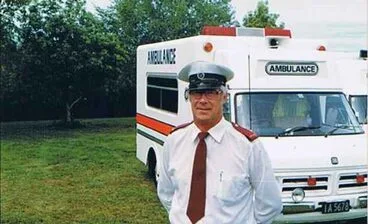
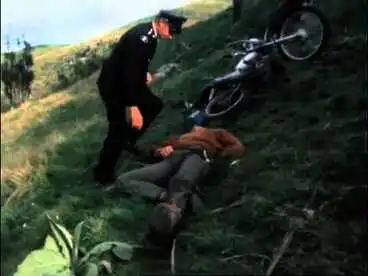
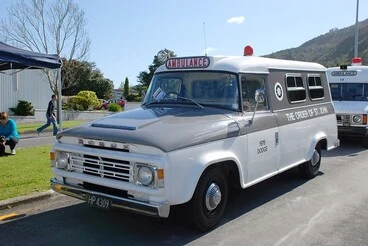
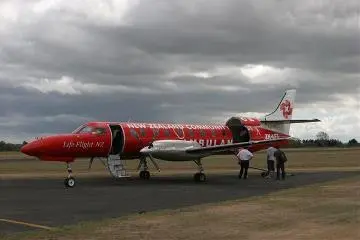
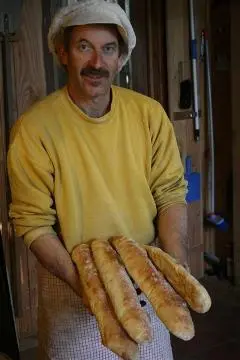
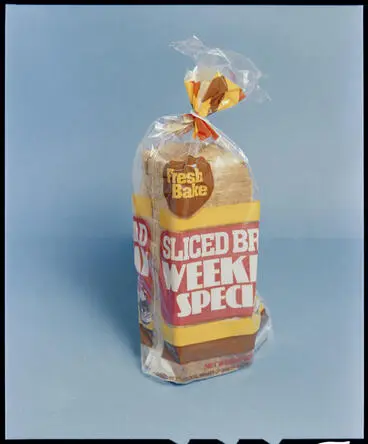


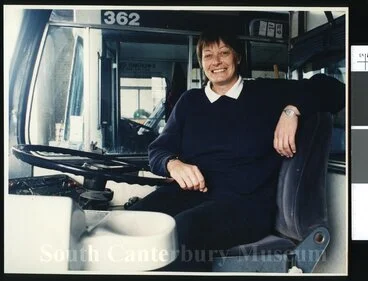



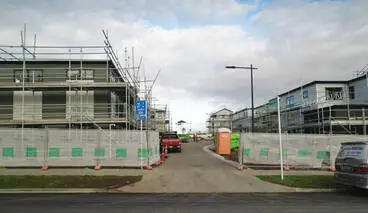

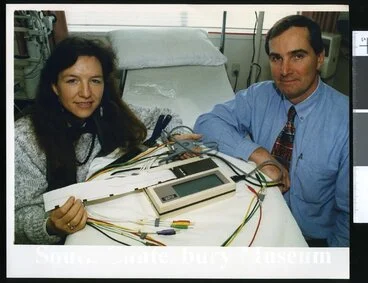



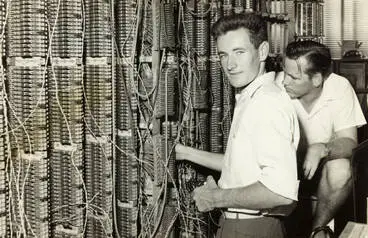




![[Hairdresser]. Image: [Hairdresser].](https://thumbnailer.digitalnz.org/?resize=770x&src=https%3A%2F%2Fcollection-api.aucklandmuseum.com%2Frecords%2Fimages%2Fmedium%2F583769%2Fbe43d90c28a8e1c45474081ec619a0ecfd839c2f.jpg&resize=368%253E)


